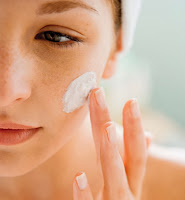All you really need to do is keep a level head and think about what your body actually needs: lots of fruit and vegetables, a little protein, and a few whole grains. That is what our digestive system can cope with. If you listen to your body, it will tell you when it is hungry, when it is thirsty and when it is full.
Here are the "rules" you need not obey:
- Eat protein in every meal. Protein is an essential building block for everything that grows and needs repair. However, protein is not just found in animal meat, it is also in vegetables. So, if you want to bulk up on muscle mass, go to the gym and eat your greens!
- Milk is good for you. You all know my opinion on milk - we don't need it! We are told to drink milk for strong bones, whereas in reality, milk causes the body to become acidic and therefore leeches calcium from the bones to reduce the acidity. Calcium can be found in many natural sources which are far more bioavailable such as raw almonds and green leafy vegetables and broccoli.
- You need to eat 5 meals a day. Not many of us have time to sit down to 5 meals a day. Stick to breakfast, lunch and dinner and a healthy snack of fruit or a handful of nuts. Lots of people I know can't eat first thing in the morning, don't worry, just make sure you have something to eat a couple of hours before lunch or you will overeat at lunchtime!
- If you are trying to lose weight eat smaller portions. Well this could well be a good idea if you are the "super size me" type. But it all boils down to WHAT you are eating. If you are eating fruit for breakfast - eat as much as you want! Bulk up your meals with lots of healthy salads and vegetables - raw is better. Vegetables provide large amounts of fibre which will fill you up for longer. Also, eat mindfully and slowly, it takes about 20 minutes for your stomach to send a message to your brain that you are full, so eat slowly and give your body time to send the correct messages otherwise you will overeat.
- Watch your calories. Well as I have said in a previous post NOT all calories are the same and this is so true. It all depends on what your calories are made up of - refined carbs and sugar are the biggest weight gainers by far just because of the way the body reacts to them, if not used immediately they are stored as fat. Animal protein and animal fat are actually not as dangerous as assumed. Healthy fats do not make you put on weight when included in a balanced diet and are also essential for the body. So, animal protein a few times a week and healthy fats in nuts and butter actually do you good!
- Healthy = vegan. This depends on the vegan... good vegans that eat fresh foods such as fruit and vegetables, nuts and legumes are on to a good thing. A plant based diet is beneficial to everyone and should be the base of everyone's diet. However, there is no harm in adding in a little animal protein if you like it - personally, I love a steak every now and again. Also, things like Oreos are vegan - yes - you hadn't thought of that one had you? But they are packed full of sugar and additives and according to a recent report, are as addictive as cocaine! So, if you want to be vegan go ahead... but do it properly.
- Avocados and coconuts are fattening. There is nothing fattening about these foods when eaten correctly. They are packed full of healthy fats and fibre and make your skin and hair glow. As you may have read in my post a couple of weeks back "Coconut Oil is good for EVERYTHING", and it really is, it is much better for cooking as it does not go rancid at high temperatures and you can even use it as moisturizer for skin and hair, deodorant and a whole host of other things - it's cheap too!
- You must drink 8 glasses of water a day. Water is essential for the body, it's also great for your skin, but really? 8 glasses a day? Not 7 or 9? Drink small amounts of water throughout the day and more if your body is telling you you are thirsty. If you drink too much in one go the body can not take full advantage of it so sip continuously.
- Cholesterol free labels must mean it's good for you. Cholesterol - that problem number on your annual check-up. Actually our bodies make cholesterol so I can't believe that something our own bodies produce is out to kill us! Of course you have to differentiate between good and bad cholesterol. Cholesterol is also obtained from animal fats - so if a packet of bread or a bottle of juice has "cholesterol free" stamped on it, it's pretty much a marketing ploy, these products shouldn't have animal fat in them to start of with.
The one golden rule to follow:
Eat fresh and natural and steer clear of processed and refined foods.
I wish you all happy holidays and an amazing and healthful New Year. I will be back on the 9th of January with a new post.
Social Nutrition:
You can make an appointment to improve your health with Social Nutrition either in person (Madrid) or online (Skype). Just send an email to lucycarr@socialnutrition.com
































